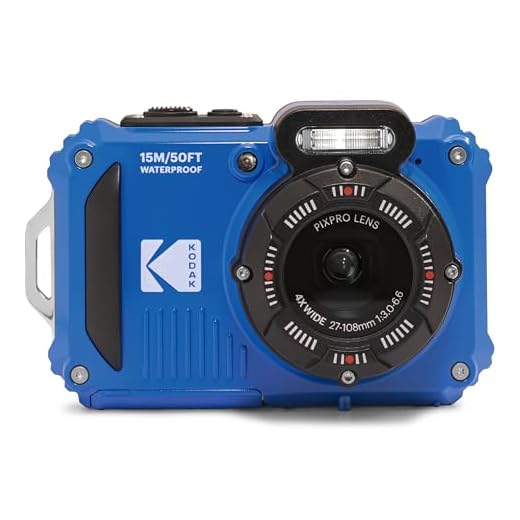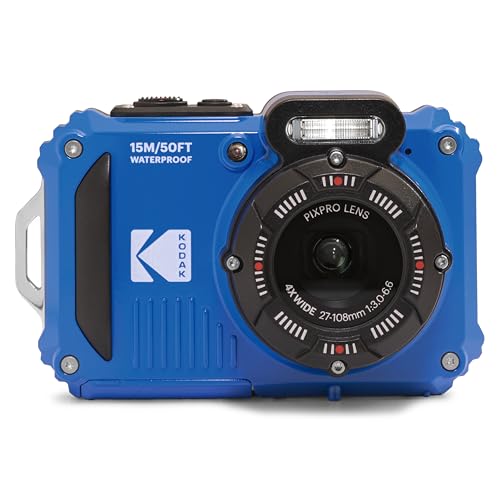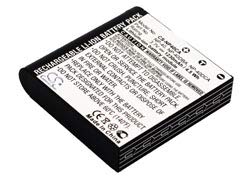



When it comes to capturing life’s memorable moments, many people often find themselves torn between investing in a GoPro or a digital camera. Both options have their own unique features and benefits, making it difficult to make a decision. Let’s take a look at the advantages of each device to help you make an informed choice.
GoPro cameras have gained immense popularity in recent years, especially among adventure enthusiasts and outdoor enthusiasts. These compact and rugged cameras are specifically designed to capture high-quality videos and photos in the most extreme conditions. Whether you’re skydiving, rock climbing, or scuba diving, a GoPro can handle it all. With their wide-angle lenses and waterproof capabilities, GoPro cameras allow you to capture breathtaking shots that a regular digital camera may struggle to achieve.
However, if you’re primarily interested in photography and want more control over your shots, a digital camera might be a better choice for you. Digital cameras offer a wider range of settings, allowing you to adjust the aperture, shutter speed, and ISO to capture the perfect image. They also offer higher image quality and better low-light performance compared to most GoPro models. Additionally, digital cameras often come with interchangeable lenses, giving you the ability to experiment with different types of photography, from landscape to portrait to macro.
Pros and Cons of GoPro and Digital Camera
Both GoPro and digital cameras have their own unique advantages and disadvantages. Here are some pros and cons of each to help you make a decision:
GoPro:
- Pros:
- Compact and lightweight, making it easy to carry around
- Designed for action and outdoor activities, with a durable and waterproof build
- Wide-angle lens captures a larger field of view, great for capturing epic landscapes and action shots
- Offers high-quality video recording, often with 4K resolution
- Advanced features like image stabilization and time-lapse mode
- Cons:
- Limited zoom capabilities, since it mainly focuses on wide-angle shots
- Smaller image sensor compared to digital cameras, which may result in slightly lower image quality
- No viewing screen, so you’ll have to rely on a smartphone app or other external display to frame your shots
- Can be more expensive than entry-level digital cameras
Digital Camera:
- Pros:
- Offers a wide range of models and price points, catering to different needs and budgets
- Higher image quality and resolution due to larger image sensors
- Flexible zoom capabilities, allowing you to capture both wide-angle and telephoto shots
- Usually equipped with a viewing screen, making it easier to frame your shots
- Some models offer manual controls, giving you more creative freedom
- Cons:
- Can be bulkier and heavier than GoPro, making it less suitable for action and outdoor activities
- May not be as durable or weatherproof as GoPro
- Video quality may not be as high as GoPro, especially with entry-level models
- May lack advanced features like image stabilization or time-lapse mode, depending on the model
Ultimately, the choice between a GoPro and a digital camera depends on your individual needs and preferences. If you prioritize portability, ruggedness, and high-quality video recording, then a GoPro might be the better choice. On the other hand, if you value image quality, zoom capabilities, and manual controls, then a digital camera may be more suitable for you.
Image Quality Comparison
When deciding between a GoPro and a digital camera, one of the important factors to consider is the image quality. Both options have their strengths and weaknesses in this regard. Let’s compare them to help you make an informed decision:
GoPro Image Quality
The GoPro is primarily known for its ability to capture high-quality, action-packed footage. It offers stunning image quality, especially when it comes to capturing fast-paced activities such as extreme sports or underwater adventures. The GoPro’s wide-angle lens allows you to capture more of the scene, providing a unique perspective.
However, GoPro cameras are not specifically designed for capturing still images, and may not produce the same level of detail as a dedicated digital camera. Additionally, in low-light conditions, the image quality may be slightly compromised compared to a digital camera.
Digital Camera Image Quality
A digital camera, on the other hand, is specifically designed for capturing high-quality still images. It offers superior image resolution, allowing you to capture finer details, vibrant colors, and create large prints without losing image quality. Moreover, digital cameras generally perform better in low-light conditions, producing clearer and less noisy images compared to a GoPro.
However, digital cameras typically have a narrower field of view, making it more challenging to capture wide-angle shots. They are also less suitable for capturing fast-paced activities due to their slower burst mode and autofocus capabilities.
In conclusion, if your primary objective is to capture stunning action shots and record exciting videos, a GoPro is an excellent choice. On the other hand, if you prioritize capturing high-quality still images with finer details, vibrant colors, and better low-light performance, a digital camera would be the better option for you.
Waterproof and Ruggedness Features
If you enjoy outdoor activities or plan on taking your camera on adventures, the waterproof and ruggedness features are essential considerations. Both GoPro cameras and digital cameras offer different levels of waterproofing and ruggedness.
GoPro cameras are known for their exceptional water resistance. They are designed to withstand diving in depths of up to 10 meters or 33 feet without an additional waterproof housing. This makes them perfect for capturing footage while snorkeling, swimming, or even in heavy rain.
Digital cameras, on the other hand, may not have built-in waterproofing. However, some digital cameras come with separate waterproof housings that can be purchased separately for underwater photography. These housings can provide similar waterproof protection to GoPro cameras, but they add bulk and may be less convenient to use.
When it comes to ruggedness, GoPro cameras are designed to be incredibly durable and withstand extreme conditions. They can handle drops, impacts, and rough handling without any issue. This makes them ideal for activities such as hiking, mountain biking, or any adventure that involves potential bumps or falls.
Digital cameras, on the other hand, can vary in their durability. Some digital cameras have reinforced exteriors or are shockproof, providing extra protection against accidental drops or impacts. However, they may not be able to withstand the same level of rough handling as GoPro cameras.
In conclusion, if you are looking for a camera with excellent waterproofing and ruggedness features, both GoPro cameras and certain digital cameras can meet your needs. However, if you specifically require a camera for underwater photography or extreme outdoor activities, GoPro cameras are the clear winner in terms of their built-in waterproofing and ruggedness capabilities.
Portability and Ease of Use
When considering whether to get a GoPro or a digital camera, one important factor to consider is the portability and ease of use of the device.
Portability
A GoPro is known for its small size and lightweight design, making it extremely portable. Whether you’re hiking, biking, or traveling to exotic locations, the compact size of a GoPro makes it easy to carry around and capture moments on the go.
On the other hand, a digital camera generally comes in a larger size with more components. While there are some compact digital cameras available, they are usually not as sleek and lightweight as a GoPro. If you prioritize portability, then a GoPro is the better option.
Ease of Use
GoPros are designed to be user-friendly and intuitive. With their simple interfaces and easy-to-use controls, they are great for beginners who want to capture high-quality videos and photos without the hassle of learning complex camera settings. The small size of a GoPro also makes it easier to handle and operate, even in challenging conditions such as underwater or in extreme sports activities.
While digital cameras offer more advanced features and settings for photography enthusiasts, they can also be more complicated to operate. They often come with multiple buttons and menus, and it may take time to learn how to use them effectively. If you prefer a straightforward and hassle-free shooting experience, a GoPro is the way to go.
In conclusion, if portability and ease of use are important factors for you, then a GoPro is the ideal choice. Its small size and user-friendly design make it perfect for capturing adventures on the go without the need for extensive photography knowledge.
Versatility and Accessories
One of the biggest advantages of a GoPro camera is its versatility. It is designed to be compatible with a wide range of accessories, allowing you to capture videos and photos in various settings and scenarios.
Whether you are planning to use your camera for outdoor adventures, extreme sports, or even underwater photography, GoPro offers a range of accessories that can enhance your shooting experience. From waterproof housings to floating hand grips, there is an accessory for every situation.
Additionally, GoPro cameras are known for their ability to mount onto different surfaces. Whether you want to attach it to your helmet, bike handlebars, or even your pet’s collar, there is a mount available to make it happen.
Furthermore, GoPro cameras are small and lightweight, making them easy to carry around in your pocket or bag. This portability allows you to film and photograph your adventures on-the-go without worrying about bulky equipment.
On the other hand, while digital cameras also have a wide range of accessories available, they may not offer the same level of compatibility and versatility as GoPro. Digital cameras are generally designed with a specific purpose in mind, such as landscape photography, portraits, or macro shots.
In conclusion, if you are looking for a camera that can adapt to various shooting scenarios and environments, and offers a wide range of compatible accessories, a GoPro may be the best choice for you.
Battery Life and Storage Capacity
When deciding between a GoPro and a digital camera, it’s important to consider the battery life and storage capacity of each option.
Battery Life
GoPro cameras are known for their excellent battery life, especially when compared to digital cameras. This is because GoPros are designed to be used in outdoor and adventure settings, where access to power sources may be limited. Many GoPro models offer a battery life of up to two hours, which is more than sufficient for most users.
On the other hand, digital cameras typically have shorter battery life due to their larger screens, higher processing power, and other features. Depending on the model, a digital camera’s battery may last anywhere from 1 to 4 hours. This could be a concern if you plan to use your camera for extended periods without access to charging options.
Storage Capacity
Both GoPro cameras and digital cameras offer different options for storage capacity. However, GoPro cameras typically have fixed internal storage or use removable microSD cards. The amount of storage available on a GoPro can range from 16GB to 256GB, depending on the model and configuration. This allows you to easily expand the storage capacity of your GoPro by swapping out microSD cards.
Digital cameras, on the other hand, often come with internal storage that is more limited compared to GoPros. Most digital cameras have internal memory ranging from a few hundred megabytes to a few gigabytes. However, digital cameras also have the advantage of being able to use external storage devices such as SD cards or USB drives, allowing you to expand the storage capacity as needed.
Ultimately, the choice between a GoPro and a digital camera in terms of battery life and storage capacity depends on your specific needs. If you plan on using your camera for extended periods without access to charging options and need ample storage capacity, a GoPro may be the better option. On the other hand, if you don’t require as much battery life and want the flexibility to expand storage easily, a digital camera may be more suitable.
Price and Budget Considerations
When deciding between a GoPro and a digital camera, one crucial factor to consider is your budget. While both options can vary in price range depending on the model and features, generally speaking, digital cameras tend to be more affordable than GoPros.
If you are on a tight budget, a digital camera might be the better choice for you. You can find a decent digital camera with good image quality and a range of useful features at a lower price point compared to a GoPro.
However, it’s important to note that GoPros come with a higher price tag for a reason. They are specifically designed for capturing action and adventure, and offer unique features such as waterproofing, image stabilization, and compatibility with various accessories. If you plan on using your camera for extreme sports or underwater activities, investing in a GoPro might be worth the extra cost.
Additional Costs
When considering the price, it’s essential to factor in additional costs that may arise with both options. For digital cameras, you may need to purchase additional lenses, memory cards, and accessories to enhance your photography experience. These costs can add up over time.
On the other hand, GoPros often come with a range of accessories included in the package, such as mounts, cases, and straps. However, if you have specific needs or preferences, you may still need to purchase additional accessories, which can increase the overall cost.
Long-Term Investment
Finally, think about your long-term intentions and how a GoPro or digital camera fits into that vision. If you are looking for a versatile camera that can capture a wide range of photography and videography, a digital camera might be a better long-term investment. Digital cameras offer greater flexibility and the ability to upgrade lenses and other accessories as your skills and interests develop.
On the other hand, if you are primarily interested in capturing action and adventure experiences, a GoPro might be the perfect option. Its durability, portability, and unique features make it an excellent choice for capturing thrilling moments while on the go.
In conclusion, consider your budget, additional costs, and long-term goals when deciding between a GoPro and a digital camera. Both options have their advantages and limitations, so choose the one that best aligns with your needs and preferences.
Ideal Use Cases and Target Audience
Both GoPro cameras and digital cameras have unique features that cater to different use cases and target audiences.
GoPro cameras are known for their durability, small size, and wide-angle lens, making them ideal for capturing action-packed moments and outdoor adventures. They are popular among extreme sports enthusiasts, athletes, and adventurers who want to document their activities in high-definition video. GoPro cameras are also suitable for vloggers and content creators who require a portable and versatile camera to capture their adventures and share them with their audience online.
Digital cameras, on the other hand, are more versatile in terms of photography options and image quality. They often come with interchangeable lenses and manual controls, allowing photographers to have more creative control over their shots. Digital cameras are preferred by professional photographers, hobbyists, and individuals who are passionate about photography and want to have more control over the images they capture. They are also suitable for those who value image quality and want to print their photos in large formats.
Ultimately, the choice between a GoPro camera and a digital camera depends on your specific needs and preferences. Consider the type of activities you plan to capture, your desired level of control, and the intended use of the photos or videos. Both options have their strengths and weaknesses, so it is important to evaluate your requirements before making a decision.
Question-answer:
What is the difference between a GoPro and a digital camera?
A GoPro is a type of action camera that is small, lightweight and designed to capture footage in extreme conditions, such as underwater or during physical activities. Digital cameras, on the other hand, are more versatile and offer higher image quality, with options for different lenses and manual settings.
Can I use a GoPro as a regular digital camera?
While GoPro cameras are primarily designed for action and adventure photography, they can still be used for regular photography. However, keep in mind that GoPros have fixed wide-angle lenses and limited manual settings, so they may not offer the same level of versatility and image quality as dedicated digital cameras.
Should I get a GoPro if I want to capture underwater photos?
Yes, a GoPro is a great choice for underwater photography. They are compact, waterproof, and can capture high-quality photos and videos underwater without the need for an additional housing. However, if you are looking for professional-grade underwater photography, a dedicated underwater digital camera may be a better option.
Which is better for capturing fast-paced action shots, a GoPro or a digital camera?
A GoPro is specifically designed for capturing fast-paced action shots. Its small size, wide-angle lens, and durable construction make it perfect for activities like sports, skiing, or biking. Digital cameras can also capture action shots with the right settings, but GoPros are generally more suitable for this purpose.
Can I use a digital camera for vlogging?
Yes, many digital cameras are great for vlogging. They offer higher image quality, better low-light performance, and more advanced features compared to GoPros. With a digital camera, you can also use external microphones and have more control over settings like aperture and shutter speed, which can be important for vlogging.











